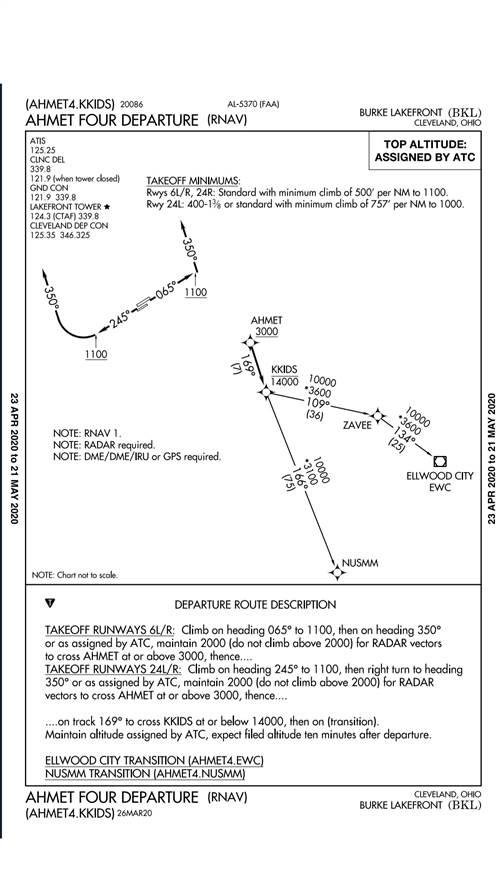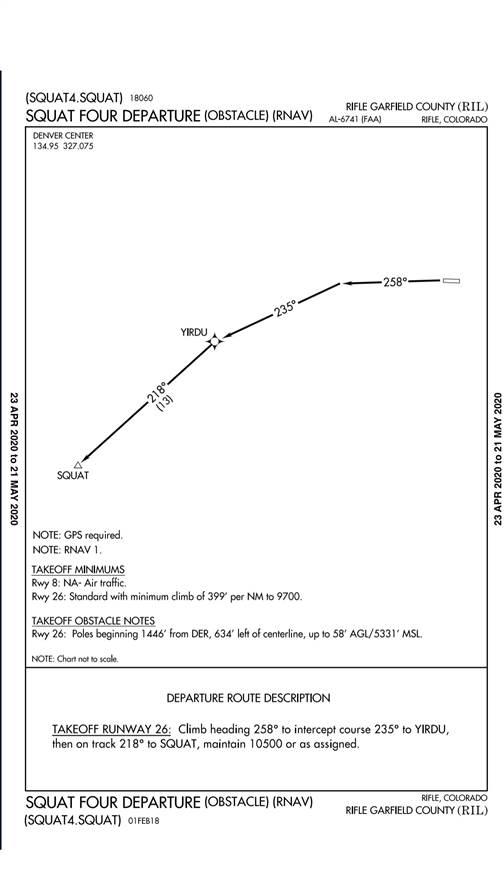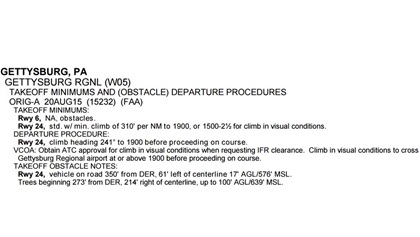On Instruments: Departures, MDA, and millibars
Departure—and nonprecision approach—insights


Sure, they’re important, but they certainly don’t outrank other procedures and phases of flight. Especially instrument departure procedures. In fact, departures in instrument conditions can call for skills and discipline just as demanding as those used in approaches. After the takeoff, it may be mere seconds until you climb into a low ceiling. Even if you’re proficient, it can be a challenge to make the transition from visual to instrument flying. It’s a critical time. You’ve just gone on instruments, and you’re close to the ground, at a low airspeed, changing configuration, and climbing into the murk. What happens next depends on the airport’s departure procedures.
 If there are any, that is. If your departure airport has instrument approaches, then it’s been surveyed for nearby terrain and obstacles. If you see no departure procedures listed, you can assume that none exist. Even so, a check with ATC or flight service should be a checklist item. Absent a departure procedure, after takeoff, maintain runway heading during the climb and then contact ATC as you proceed on course. That’s simple enough, but other types of departures are more detailed, and require that you follow defined routes, procedures, and altitude restrictions.
If there are any, that is. If your departure airport has instrument approaches, then it’s been surveyed for nearby terrain and obstacles. If you see no departure procedures listed, you can assume that none exist. Even so, a check with ATC or flight service should be a checklist item. Absent a departure procedure, after takeoff, maintain runway heading during the climb and then contact ATC as you proceed on course. That’s simple enough, but other types of departures are more detailed, and require that you follow defined routes, procedures, and altitude restrictions.
Standard instrument departures (SIDs) are charted, together with text descriptions of their procedures. You may be given a “climb via” clearance, so look to the SID for advice. With a climb via clearance, don’t expect controllers to issue step-climb or vectors. Instead, follow the SID as charted.
Obstacle departure procedures (ODPs) are published in the Terminal Procedures Publication when high terrain or obstacles are factors. Bear this in mind: You do not need an ATC clearance to fly them. Still, it’s a very good idea to advise ATC that you’ll be flying one, by either noting it in the remarks section of your flight plan or telling clearance delivery or ground control prior to taxiing.
Unlike SIDs, ODPs are seldom charted, so you’ll have to follow the procedures as printed. ODPs may require that you meet a certain climb rate. This will be a minimum of 200 feet per nautical mile—or more, depending on the surrounding terrain and/or obstacles. In the absence of any other departure procedures, ODPs should be used at night or whenever IMC prevails.
Departures in instrument conditions can call for skills and discipline just as demanding as those used in approaches.Radar departures are conducted via ATC-issued heading and altitude clearances. They’re nice because they relieve you of having to look up and follow charted or textual procedures. Controllers keep you away from terrain, and may even vector you using diverse vector areas (DVAs)—areas that allow safe vectoring below minimum vectoring altitudes (MVAs) around some airports.
Pilots not wanting to launch into low weather will like another kind of departure—the visual climb over the airport (VCOA) option. Here, you file for a VCOA departure, depart under VFR, and then circle over the airport while climbing to whatever altitude the VCOA procedure states. After that, it’s time to call ATC and obtain the clearance. Until the clearance is received, the pilot is responsible for separation from terrain, obstacles, clouds, and other aircraft. Of course, this all assumes that VFR conditions prevail.
What to do if your departure airport has no tower? Some airports have remote communications outlet (RCO) clearance delivery frequencies that are very handy. Using them is a lot easier than the alternative: a radio or telephone call to an ATC frequency or telephone number listed in the Chart Supplement. Under that method, you’ll be given a clearance with a void time. Then the pressure’s on to fire up the airplane and get in the air before the clearance expires.
Going under—MDA and DH
In March 2020, “On Instruments: Diving and Driving” dealt with nonprecision approaches, and drew comments from several seasoned instrument pilots. Most had to do with flying at a constant descent angle and the danger of dipping below minimum descent altitude (MDA) while using a visual descent point (VDP). Airline pilot Alan Gurevich noted, “You set up your descent at the FAF [final approach fix] so as to hit the MDA at the VDP, and you’re still in a descent. If you see nothing you’re guaranteed to go below the MDA….the issue is no one seems to teach that the VDP has to be figured so that, should you not meet the ‘continue under visual conditions’ criteria when you get there, you complete the transition to a positive rate of climb in the missed approach prior to reaching the MDA. Thou shalt not bust the MDA.”
Great point. With ILS approaches there’s a leeway that takes the transition to the missed approach into consideration. There’s a tolerance that allows you to dip slightly below decision height (DH) as you power up, reconfigure, and climb away. With nonprecision approaches there’s no such leniency.
Email [email protected]
 Millibars to inches of mercury
Millibars to inches of mercury
I was a guest on AOPA Live’s Pilot Lounge (aopalive.aopa.org/category/videos/pilot-lounge) recently talking about trans-Atlantic ferrying. It made me recall some of my more exciting experiences and also brought altimeter settings to mind. Many U.S.-manufactured airplanes with round gauges have a single Kollsman window, with altimeter markings labeled in inches of mercury. If you fly in foreign airspace this can be problematic if altimeter settings are published in millibars. That’s when you need a chart that can show you the equivalent altimeter settings in inches of mercury.
Now you see more and more round-gauge altimeters that use dual Kollsman windows, so you can see—and set—both measurements. If you’re flying behind most glass displays—like Garmin’s G1000 and G3000—then no worries; you can make your default settings in inches of mercury or millibars—and even make the altitude read in meters, if you happen to be flying to Russia or China.
But if you have both wanderlust and a round gauge with inches mercury only, here’s a chart you’ll be well advised to carry: it’s at pcwp.com/mb_conversion.html and it looks like this. —TAH



